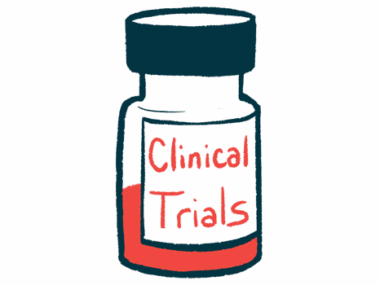Testing of Sionna’s NBD1 stabilizers for CF begins in healthy volunteers
Phase 1 clinical trials now underway to test safety of SION-719, SION-451
Written by |

The first healthy volunteers have been dosed in Australia as part of two separate Phase 1 clinical trials of SION-719 and SION-451 — two second-generation NBD1 stabilizers that Sionna Therapeutics is developing to restore function to the CFTR protein, which is faulty in cystic fibrosis (CF).
The goal of the two studies (ACTRN12624000739516; ACTRN12624000849594) is to test how safe and well tolerated SION-719 and SION-451 are compared with a placebo, when given as an oral suspension at single or multiple ascending doses.
“We expect that the data from these single and multiple ascending dose trials will inform our decision about a lead NBD1 stabilizer to bring forward into the next stages of clinical development,” Mike Cloonan, president and CEO of Sionna, said in a company press release.
The studies are slated to involve adults willing to abstain from alcohol, caffeine, and smoking for their duration. Participants also must agree to not eat certain vegetables, charcoal-grilled meats, and poppy seeds.
NBD1 stabilizers aim to restore function to the CFTR protein
CF is caused by mutations that result in a buildup of thick mucus that clogs the lungs and other organs. The most common disease-causing mutation, F508del, is located in a region of CFTR called NBD1. A mutation in this region makes the protein unstable, causing it to fold into an incorrect shape and lose its function.
Both SION-719 and SION-451 are second-generation small molecules that are designed to keep the NBD1 region stable despite the presence of a disease-causing mutation. This is expected to restore function to the CFTR protein by preventing it from misfolding.
“We have a novel ability to target NBD1, which we believe could be the key to raising the efficacy bar and unlocking improved clinical benefits for CF patients,” Cloonan said.
Earlier preclinical data have shown that the company’s small molecules fully restored the function of a version of the CFTR protein that carried the F508del mutation, when combined with one or more CFTR modulators, in a cell-based model that mimics the airways.
Building on these data, the company is considering pairing its NBD1 stabilizers with one of the three clinical-stage CFTR modulators it has licensed from AbbVie. This approach could offer more effective options when CFTR modulators alone don’t fully restore the protein’s function.
We have a novel ability to target NBD1, which we believe could be the key to raising the efficacy bar and unlocking improved clinical benefits for CF patients.
The two dose-escalation clinical trials have a similar design. In both, healthy volunteers, ages 18 to 55, will be randomly assigned to receive either the test small molecule or a placebo in a fasted state. In the first part of each study, the participants will receive a single dose that can range from 20 to 160 mg for SION-719, or 75 to 750 mg for SION-451.
In the second part, the participants will receive either the test small molecule or a placebo twice daily for up to 10 days. In addition to safety and tolerability, the researchers will evaluate SION-719 and SION-451 for their pharmacokinetics, which refers to how the small molecules move into, through, and out of the body.
According to Sionna, these are the first clinical-stage NBD1 stabilizers to be developed.







